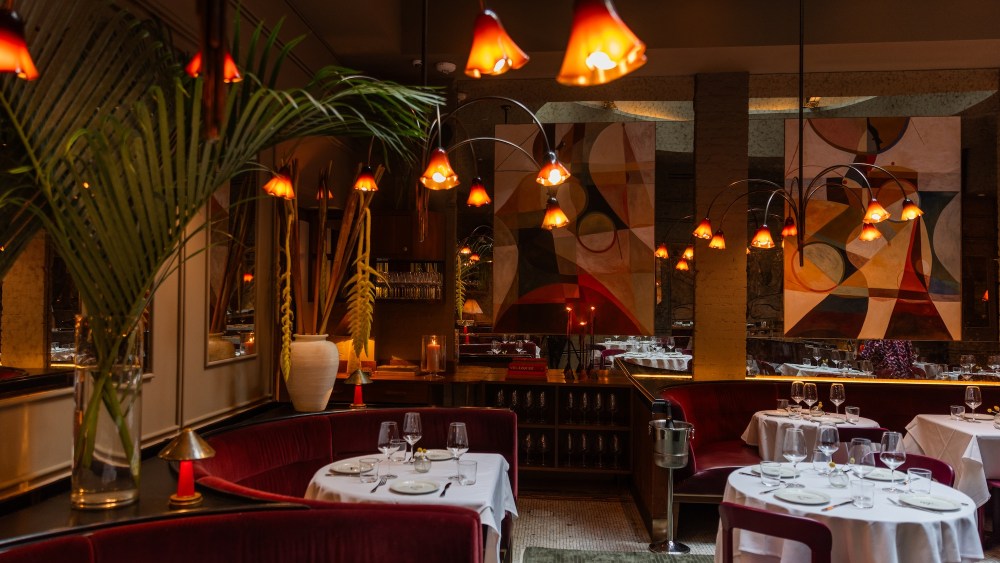Almost a year after Tusk Bar opened its doors inside The Evelyn Hotel, the bar has welcomed a dining companion into the building. Brass is officially open for business.
“Tusk was always the prelude to the Brass experience,” says restaurateur Nick Hasatouris, who debuted the restaurant with his chef partners Jeremiah Stone and Fabián von Hauske this week. “Getting drinks, maybe some oysters, and then going on for a dining experience.”
The menu, led by the Michelin-starred Stone and von Hauske, approached the menu through the lens of a brasserie, but wanted to make it feel more New York than French.
The appetizer section includes moules frites (done with chickpea frites rather than french fries) and a crab and maitake tartlet alongside a small raw bar section; entrées include steak tartare and prawn tartare, with mains like American wagyu steak, steelhead trout, and pork shoulder à la moutarde. There’s also a large-format golden amish chicken roulade stuffed with mousseline of herbs and black truffle, which Hasatouris predicts will become a signature item on the menu.
You May Also Like

“I didn’t want to just have the large steak that you see on a typical menu,” says Hasatouris, whose other restaurants include Moby’s in the Hamptons, the Eveleigh in Hollywood and Trapizzino in the Lower East Side. “We wanted to do something that felt just a little bit more fun,” he adds. “It’s a dish that has been around, but it’s our take on it.”
Von Hauske is known for creating desserts that become a necessary part of the dining experience, and after-dinner selections at Brass include a popcorn ice cream with shaved concord grape and banana-split profiterole. Bar director Tristan Brunel leads the restaurant’s wine and cocktail program, which features “Two Sippers,” small formats of classic drinks.

The team enlisted woman-led and Brooklyn-based design firm Islyn Studios to reimagine the 70-seat dining room and private dining room spaces, which are rooted in Art Deco and Beaux Arts details.
“We inherited these amazing bones. The building’s been here since 1903,” says Hasatouris of the hotel’s architecture, which includes original millwork and restored original floors. “We tried to really think about what it meant to be in these types of spaces historically, and understand those layers and then say, how can we bring them back in a different way?” he says. Set underneath a skylight, an antique piano in the center of the dining room pays homage to the location’s former identity as Tin Pan Alley, the center of the city’s music industry in the height of the Jazz Age.
“[The space] does feel grand in many ways, and both spaces feel classic, but I also wanted to make sure that they weren’t period pieces, that they also felt very much of the moment and relevant to now,” adds Hasatouris.
While no longer known for music, the hotel is still in a culturally relevant area of the city, which has become a popular dining destination in recent years with the opening of restaurants like Coqodaq and Café Carmellini at the nearby Fifth Avenue Hotel.
“It’s a thriving neighborhood; there’s no question,” says Hasatouris of the neighborhood, also calling attention to the area’s design and furniture showrooms. Madison Square Park is only one block south of the hotel. “It’s a great part of the city and really central. If you’re traveling, it’s a great place to stay, where you can access the city really easily.”
The appeal of being in a historic hotel space is two-fold: “Having a hotel bar is super cool because every day there’s a new story and new people,” he says, adding that the setting can also influence the guest experience. “There definitely is this cachet of being in an old New York hotel as well. People are really seeing and understanding what it means to be in New York.”




